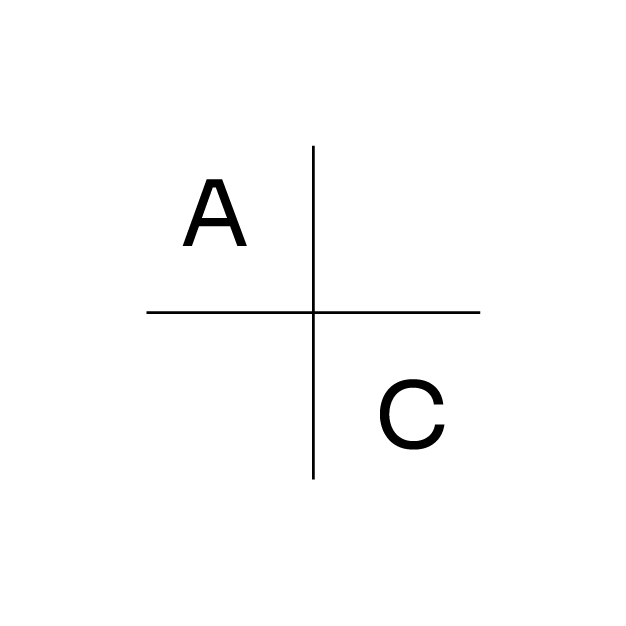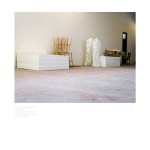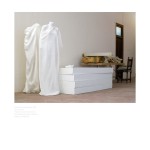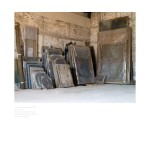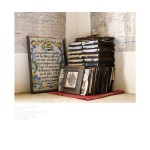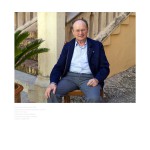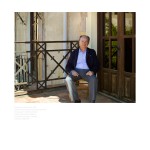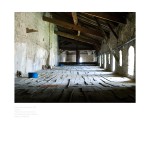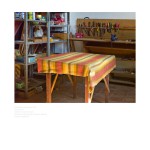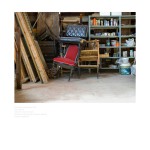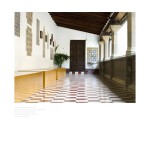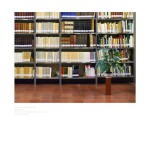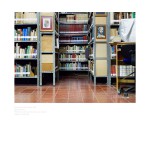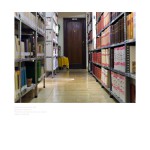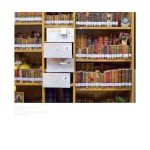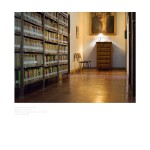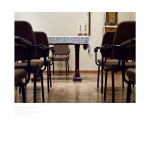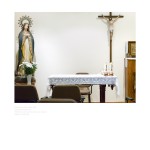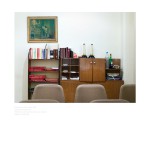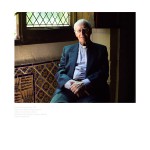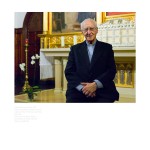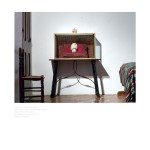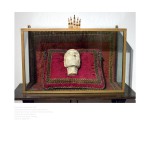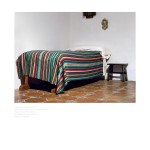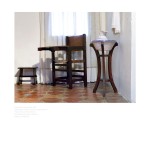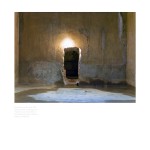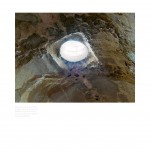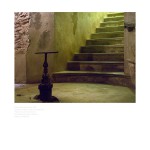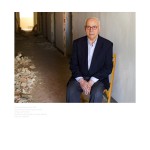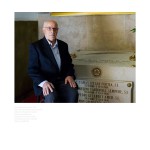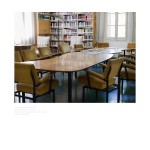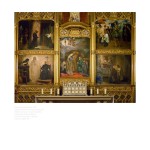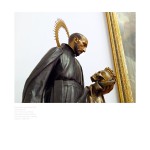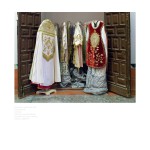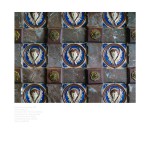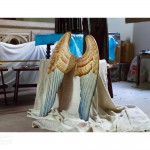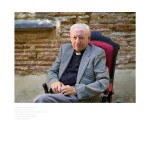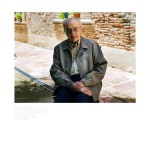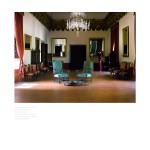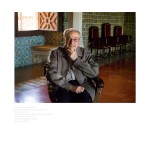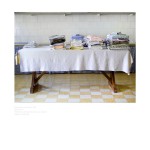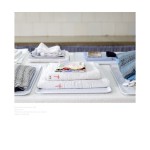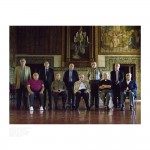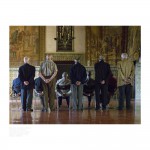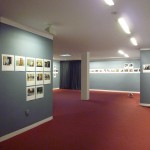Panorama Vocacional
Panorama vocacional. 360° Serie Mise en Scène XII. 2008-09
In an article I was asked to write for the presentation of a new project years ago, I spoke about my concerns, about how my ideas materialize, about art, photography, politics, the past and the future. In just under two pages, I threshed out my feelings and questions on several issues, all of them very general, stunning the reader with a infinite number of questions I was wondering about, all of which were left unanswered: What kind of relationship exists among the artist, photographer and spectator? Does each individual come out of/depend on/belong to a collective? What space or spaces might be considered spaces for socializing the individual, or in other words, for public negotiation? To what point can we as artists create new scenographies? Is the private taking on a public character, or in other words, does privacy exist?
Now, reflecting on the gestation of this new project entitled Panorama vocacional. 360°. Serie Mise en Scène XII. 2008-09, it is odd to think back on this article, since despite the passing of time, these questions persist, though they temporarily disappear from my mind once I start a new project. This is how I came to the Palace of Gandia (near Valencia), invited to put on an exhibition. After hearing explanations about everything regarding the Palace, its history, its residents, etc., I thought about the possibility of doing a specific project; I analyzed the opportunity that it offered me, I thought about it and re-thought about it, and after a few months I had a road map to follow through to the day the project was completed. Questions? No sign of any at all.
With a discreet appearance on the outside, the interior of the Ducal Palace of Gandia hides such suprises as the magnificent Patio de Armas, the Salón de Coronas and the spectacular Galería Dorada. The building (built, expanded and restored over seven centuries) today features a variety of architectonic styles, with vestiges of the primitive Gothic palace from the 14th and 15th centuries, Renaissance additions from the 16th century, Baroque expansions and transformations from the 16th and 18th centuries, and finally Neo-Gothic reconstructions from the late 19th and early 20th centuries. Though the Palace is important for its architecture, it is even more so for its striking beauty. The Royal Dukes of the Kingdom of Aragón had their primary residence here. In 1485, the cardinal Rodrigo de Borja, the future Pope Alexander VI, bought the duchy for his descendents, thus establishing the dynasty of the Borja Dukes until the year 1740. The 4th Duke San Francisco de Borja stands out among them, who after the death of his wife decided to join the Compañía de Jesús, and would later become the 3rd General. Since 1889, the Palace along and its Jesuit residence has been property of the Compañía de Jesús, which sees to its maintenance and has made the figure of San Francisco de Borja the subject matter of its interior.
The project has been developed thanks to the generous participation both of the Jesuits as well as others involved in running the Palace, including the volunteer work of all the priests belonging to the Compañía de Jesús and those currently or previously linked to the Palace, especially those originally from the city of Gandia. With all these references, Panorama vocacional. 360° is an artistic project of a documentary nature carried out in four phases:
Firstly, a conversation/personal interview is carried out with each of the participating Jesuits. This phase is key to the project in that it is from here that the conceptual guidelines for the future portraits of the participants will come about. These conversations lend the project a certain anthropological character in that it studies and analyzes the individual characteristics of the Jesuits related to the institution, their vocation, their personal stories, and their relationship with the social setting around them. This provides the different point of views on issues concerning the Palace, such as the Compañía itself or the Church in general, such as: the current state of the Ducal Palace, San Francisco de Borja, the evolution of the Borja family, the relationship of the Borjas with the city of Gandia, the relationship of the Jesuits with the Palace itself, their personal experiences in the Palace as people born in Gandia, their idea of the Church today and the evolution of the Church in general.
Secondly, two individual portraits are taken of each of them: one taken in the spot in the Palace or the residence they like the most, and the other in the place they find least attractive. The participants themselves decided not just the location for the portrait, but also their clothing and pose. In elaborating these individual portraits, in which the model made most of the decisions on how their own portrait was to be composed, the artist puts himself at the service of the model, though without losing his intentions. Close ups of human faces, which look nothing like the faces of the untouchable Saints we are used to seeing.
Thirdly, I did a photo overview of the architectonic features of the entire space: the palace and residence. These images show the architectonic state of the palace today, after its successive alterations, rehabilitations and changes in use, and I discovered each and every corner making up this magnificent building of civil architecture, one of the most characteristic and striking of its kind. Thus, Panorama vocacional makes a photographic inquiry into both the Palacio’s architectonic greatness, and the austerity of the Jesuit residence joined to it, speaking directly of the everyday life of the Jesuits living inside.
And lastly, the fourth phase, is made up of a group portrait of most of the Jesuits that volunteered to participate. On this occasion, I decided on the place where the group portrait was taken as well as the pose the group was to take. one portrait facing the camera and one with their backs turned to the camera, with everyone clasping their hands behind their back. This gesture indicates the superiority and confidence of the subjects, allowing them to expose their most vulnerable areas such as the stomach and the heart in an unconscious act of act of fearlessness that the spectator cannot see since they are photographed from behind. In short, these new pieces might be interpreted as dramaturgical/documentary images that immortalize a specific moment, specific places and people on a single occasion, who come together and pose as though performing for the camera, thus providing a record of the physical appearance of the members and their belonging to something in common. Though the theatrical components that have always characterized my work has not disappeared; through photos and videos they always seek to question the rules of social behavior defined by the public and private.
In Panorama vocacional, photography and video bear witness to the complexity of the processes of communication through which relationships between information, representation and visual experience are established: the way things are insinuated (photography) and the way they speak (video), the relationship between what is seen and what is said, what is hidden and what is shown, the invisible and the visible. Through photography and video, an artistic discourse is developed focusing on the use of the human body, where all kinds of aspects come together: History, Anthropology, Religion, Politics, Sexuality, etc. On this occasion, the body is used as an excuse or stage where the individual and the religious are intertwined to generate reflection on human behavior within the social setting. Due to the use of numerous people in the mis-en-scene, the body, or perhaps the bodies, pose before the camera in a natural way, though acquiring symbolic and expressive roles of heightened dramatic degree. The human body possesses a metaphorical dimension where its historical-traditional character acquired over time gets mixed together, with a personal perspective. The portrait of the participants places them within a dramatic-theatrical context, where everything is possible. And in this way, the final outcome is drenched with a kind of artificiality caused by the presence of the camera and the context in which the model is pictured: the Jesuit Residence and the Ducal Palace of Gandia. In short, Panorama vocacional revises the relationship between the artist and the model over the course of Art History, and specifically within the History of Portraits, where a power relationship between both parties is always established.
Panorama vocacional does not seek to sanctify or blame religion, in this case Catholicism, for anything it might have done; nor does it wish to call into question any of their mystical truths. All it hopes to deal with is the complexity and the always difficult relationship between society, religion, the individual and art, nothing new if we look at our history. Personally religion was a very familiar issue for many years, whereas today is very foreign to me; however, this project has granted me the chance to experience once again the forgotten feelings of santification, sin, discipline, dedication, hierarchies, cleanliness, etc. While my beginnings in the world of art distanced me even further from religion, this project has given me the opportunity to relate with religion once again. As James Elkins said in his book entitled On the Strange Place of Religion in Contemporary Art: “If one loves art, sooner or later one will run into an unusual fact: there is hardly any religious modern art in museums or in art history books. It is a fact that is at the same time evident and rare, known by everyone and yet hardly ever mentioned. I cannot think of a subject matter as hard to deal with, as tricky when it comes to speaking about it in an acceptable way for the different points of view that people hold. Perhaps art has helped me to remove some of the doubts I spoke of at the beginning, but it has not helpled me to clear up my existential questions on the existence of God, religion or spirituality. I might need more time… Mira Bernabeu.
